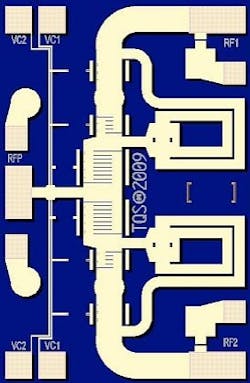Boosting RF transmitter efficiency without increasing size is goal of Northrop Grumman contract from DARPA
The key to this research is to broaden the RF power amplifier's supply modulation bandwidth at frequencies to 500 MHz with composite efficiency of no less than 75 percent by employing the contour modulation to maintain efficiency performance of the amplifier, Northrop Grumman officials say.
Contour modulation enables a phase-modulated signal waveform and amplifier output impedance to work together to maintain efficiency over a sizable output power back-off. Microscale integration and packaging with thermal design considerations is critical in achieving the efficiency.
Northrop Grumman is working with the University of Calif. at Los Angeles (UCLA) and TriQuint Semiconductor in Hillsboro, Ore, on the program. Northrop Grumman is doing final integration and demonstration; UCLA will design the complementary metal oxide semiconductor (CMOS) circuit; and TriQuint will work on GaN and related process technologies.
For more information contact Northrop Grumman Advanced Concepts & Technologies online at www.es.northropgrumman.com, UCLA at www.engineer.ucla.edu, or TriQuint Semiconductor at www.triquint.com, or DARPA at http://www.darpa.mil/.
